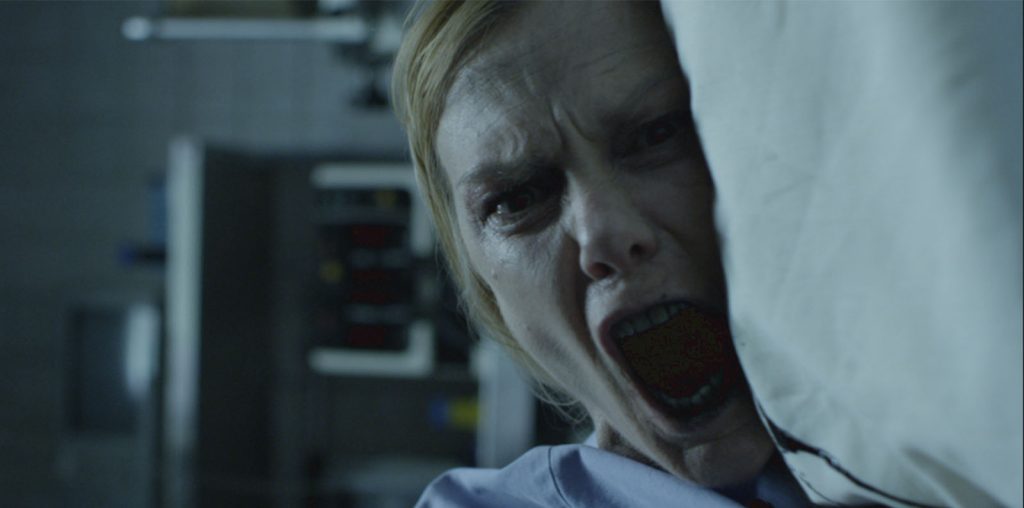
One of the most fascinating women to grace the silver screen and the grimy world behind the camera was Mary Pickford. To film audiences of the 1910s and 1920s, she was beloved for a seemingly endless succession of films which cast her as a plucky little girl fighting and winning in a big, bad world. In Hollywood, however, Pickford was a mature and focused businesswoman who yielded an acute level of power which was unparalleled in its time and which few women today could truly claim to possess. At the peak of her popularity, she was the most adored woman in the world. Yet when she passed away, she was a virtually-forgotten recluse lost in alcoholism and ill health.
It is a shame that the documentary “Mary Pickford: A Life on Film” fails to properly celebrate this fascinating woman. Perhaps the wealth of a life which Pickford enjoyed could never be adequately telescoped into a 98 minute feature, yet director Hugh Munro Neely (working under the auspices of the Mary Pickford Foundation) serves up a rather unsatisfactory buffet in which the genius of Pickford’s work is ill-presented.
The key to the problem with “Mary Pickford: A Life on Film” is the decision to have Whoopi Goldberg host and narrate the film. Goldberg’s graceless and indifferent narration is totally at odds with the drama of Pickford’s rollercoaster life, and her few sluggish moments on-screen suggests Goldberg’s mind was elsewhere while she was parroting her cue card lines. Goldberg’s cranky narration creates an annoying and tiresome situation which only the most patient viewer can tolerate and look beyond. Known by the nickname “America’s Sweetheart,” Pickford was actually the Toronto-born Gladys Louise Smith who was pushed on to the stage as a child to help support her impoverished family. The child performer displayed an amazing precocity and depth of talent and was featured in many touring productions that criss-crossed the United States and Canada in the early years of the 20th century. Good fortune allowed her to cross paths with D.W. Griffith in 1909, who brought her into films and launched her star in a series of films which allowed the actress to essay a subtle performance style which was far more genuine than the hambone emoting typical of the early movies. By 1919, Pickford’s popularity was so strong that she, Griffith, Charlie Chaplin and Douglas Fairbanks (her second husband) were able to create United Artists, becoming the first creative talents to produce and distribute their own work independent of the studio system.
Pickford’s petite beauty allowed her to maintain the illusion of extreme youth as she blossomed into her teens, then her 20s, and even her 30s. This proved to be both a blessing and a curse: it allowed her to command the box-office through highly-regarded performances in “Sparrows,” “Rebecca of Sunnybrook Farm” and “Pollyanna,” yet it also prevented her from tackling roles which showed off her grace and maturity as an actress. Two of the more fascinating clips presented in “Mary Pickford: A Life on Film” offer both a rare sense of against-type cross-cultural role play for the very Irish Pickford and unprecedented respect for non-white cultures: the title performance as the doomed Native American lover in “Ramona” and a remarkable Japanese turn as the ill-fated “Madame Butterfly.”
“Mary Pickford: A Life on Film” tries to attempt the impossible in shoehorning as many Pickford film clips as possible. Sometimes it shines with an unexpected gem, such as the raucous alley dance from “Hoodlum” or the mud-fight from “Little Annie Rooney,” but often the clips are either too brief to have any impact (such as the nanosecond offering from the delightful “Suds”) or the focus seems way off course (the 1929 talkie “The Taming of the Shrew,” in which the clips are centered totally on Douglas Fairbanks’ miscast Petruchio while Pickford is barely given a chance to utter a word).
Further aggravating the matter are dullish talking head commentaries from Leonard Maltin, Roddy McDowall, Janet Leigh and several other film folks who either never met the lady or were only briefly acquainted with her. Vintage interviews from stepson Douglas Fairbanks Jr. and third husband Charles “Buddy” Rogers are spliced in to give some level of first-person bonding with the subject at hand.
While “Mary Pickford: A Life on Film” is surprisingly frank about the financial disasters which plagued the much-ballyhooed United Artists venture and the fissures in her marriages to Fairbanks and to alcoholic first husband Owen Moore, the film either skims over key issues in Pickford’s life or forgets to include them. Pickford imported German director Ernst Lubitsch to helm the 1923 epic “Rosita,” but hated the finished product and removed it from circulation. Don’t ask why, for this film never explains the reason.
Billy Wilder was unsuccessful in getting Pickford to play Norma Desmond in “Sunset Boulevard,” but the film fails to note that Orson Welles was equally unsuccessful in getting her to play the dying matriarch in “The Magnificent Ambersons.” Pickford’s favorite screenwriter Frances Marion is barely cited, even though she scripted all of the star’s big hits. Also absent is mention of Pickford’s work in radio following her retirement from film acting, and no explanation is given on why the Academy of Motion Pictures Arts & Sciences waited until 1976 to present a Lifetime Achievement Oscar to Pickford. The film notes that some of Pickford’s films are lost, but no information on the missing productions is shared.
